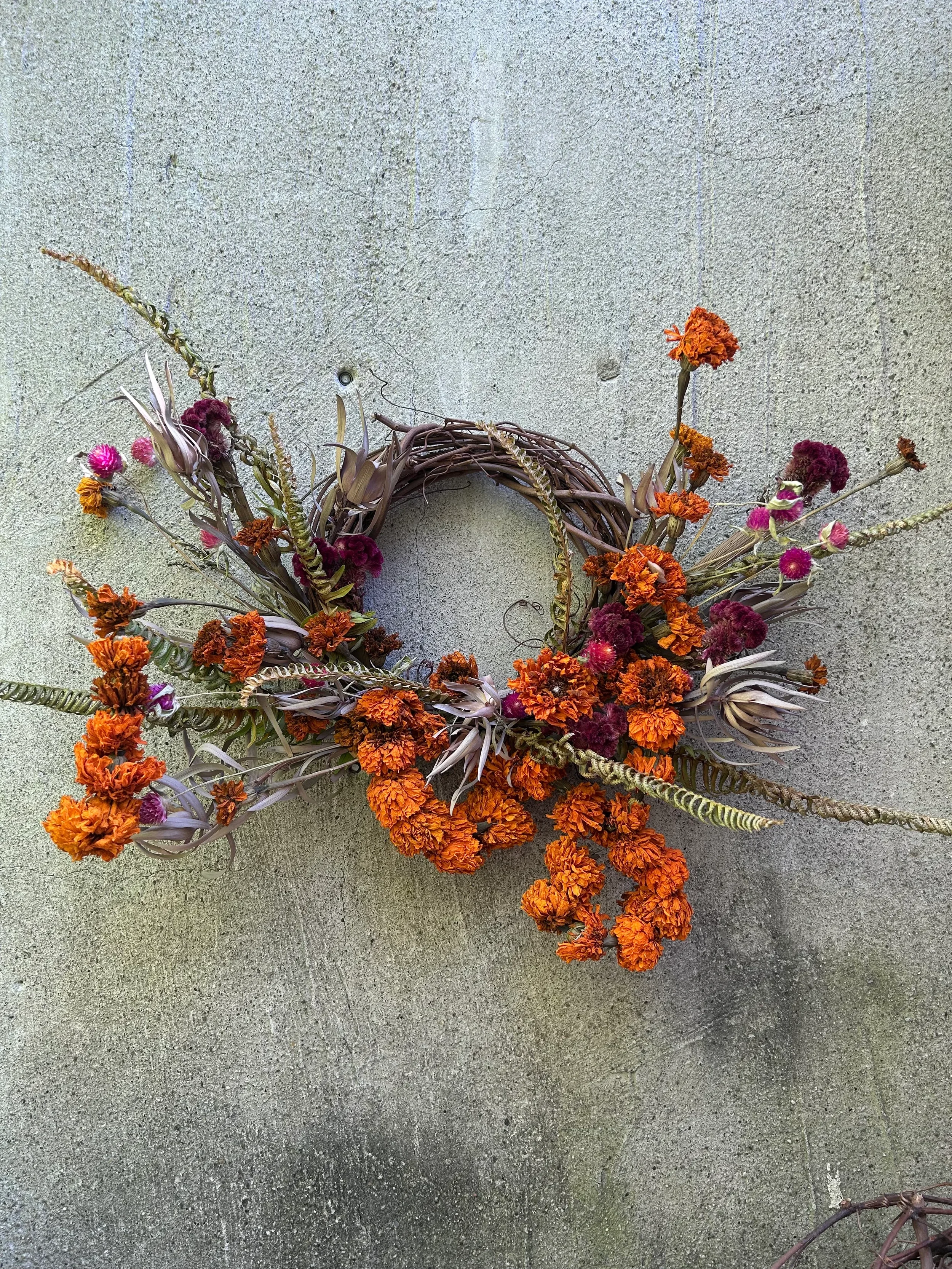The Lazy Gardener’s Guide to Fall Planting
Photo: Outdoor Guide
When you want more flowers with less work (and fewer rules)—There’s a sweet spot in the Hudson Valley gardening calendar—and it’s right now.
Fall is low-key the best time to plant, especially if you're the kind of gardener who loves beautiful results but doesn't exactly thrive on planning and pruning spreadsheets. The soil’s still warm, the air’s cooled off, and plants are ready to settle in without all the drama of summer heat. Even in Zone 6b, you’ve got a little time.
Here’s how we do fall planting at Flora Good Times: no pressure, no guilt, just the kind of moves that pay off next season (and beyond).
1. Plant Your Spring Bulbs Now (and Then Forget About Them)
Tulips, daffodils, alliums—this is your moment.
Buy them now, get them in the ground before the first hard frost (usually by early November in our zone), and then do absolutely nothing. The cold months will do the work for you, and by spring, you’ll be rewarded with color, texture, and that first jolt of life when you need it most.
Pro tip: plant more than you think you need. You'll never regret a full bed of daffodils.
2. Cut Back What You Must, Leave the Rest Alone
Not everything needs a haircut.
Sure, you can cut back floppy, done-for annuals and any disease-prone foliage. But leave your seed heads, grasses, and sturdy stalks. They feed the birds, support overwintering insects, and catch the frost in a way that’s genuinely beautiful.
Echinacea, rudbeckia, sedum, and ornamental grasses? Leave 'em. The dried-up version is part of the show.
3. Divide and Replant Perennials
If you’ve got overgrown clumps of black-eyed Susans, yarrow, bee balm, or daylilies, now’s the time to split them up and spread the love.
Fall dividing is easy: dig, split, replant, water once, walk away. Cooler weather helps them root without stress. And come next spring, you’ll be glad you didn’t wait.
4. Don’t Clean Too Much
Seriously.
A little leaf litter acts like a winter blanket for your soil and helps protect roots. It also supports the ecosystem underground—and aboveground. Let the garden be a little wild. The bugs will thank you. So will your back.
5. Stop Worrying About Doing It "Right"
You don’t need a formal planting plan. You don’t need to mulch everything in sight. You don’t need to feel bad for letting the goldenrod go to seed.
Fall gardening is about setting things up—not wrapping them up.
It’s the gardener’s quiet season. Not flashy. Not urgent. Just full of small, satisfying moments that will come back to you in spring.
Do a little now, and thank yourself later.
6. Bring the Season Indoors with Dried Flowers
As the garden starts to fade, this is your cue to start clipping and saving what’s left. Dried flowers are fall’s way of sticking around—long after the blooms are gone from the beds.
Marigolds, strawflower, statice, grasses, seed pods, and even herbs like oregano and mint all dry beautifully with very little effort. If you’ve got a patch of marigolds going strong, harvest them now and string your own garlands, or bundle them up for a kitchen or doorway moment that smells earthy and warm.
Not a DIYer? We’ve got you.
Our handmade marigold garlands and fall wreaths are in the shop now—crafted with locally grown blooms and designed to carry that golden, late-season magic indoors.
Whether you’re snipping from your own garden or picking something up from us, dried flowers are the perfect way to let the season linger a little longer.
— Flora Good Times
Local flowers, seasonal rhythm, and doing less—but better.




